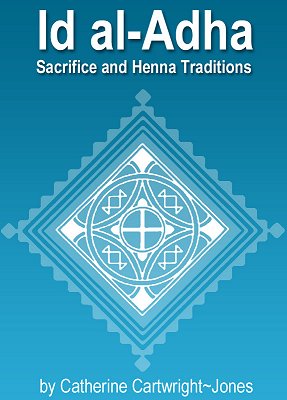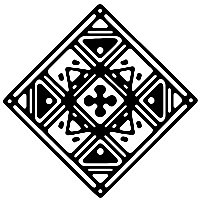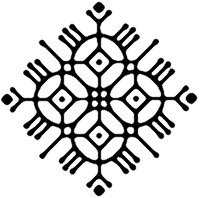| Id
al-Adha: The Ecological and Nutritional Impact of the Muslim Feast of Sacrifice, and the Significance of Henna in this Sacrifice.  Catherine Cartwright Jones Copyright February 14, 2002 Is now availble as a FREE download! Click HERE or on the image above to get this book! This paper details Id sacrifice traditions and effects, focusing on henna and ecosystem management, from its origins in the Neolithic Mediterranean world, to present day. Artifacts and written records dating from the Bronze Age Mediterranean prove that women hennaed their hands in celebration of a springtime ritual sacrifice to secure fertility and blessings for the land and community. These fertility festivals and their henna traditions spread into three different major religions, Judaism, Islam, and Christianity. The annual sacrifice to secure the favor of a deity was not simply symbolic. The ritual action managed the domestic herd populations within the ecosystems towards an optimum level of productivity, benefiting both people and landscape. This
paper
has details on rural Moroccan Id henna traditions from late 19th
century
.
Want
to learn about the origins of henna traditions? Read this paper! Its FREE!
|
| Return to Id
al-Adha and Henna
Want more great henna patterns? Return to the Encyclopedia
of Henna Index |

